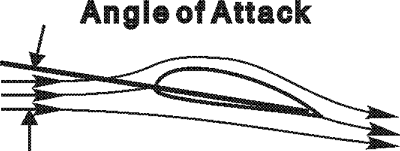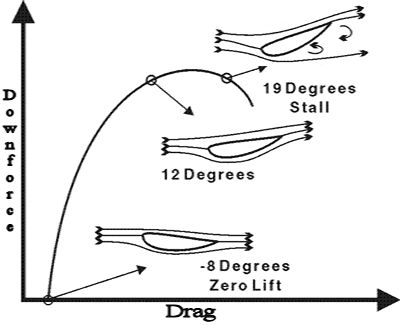Angle of Attack


The angle of attack is the angle at which an airfoil passes through the air. This angle is measured between the chord of the airfoil and the relative wind direction.
The chord is an imaginary line from the leading edge to the trailing edge of an airfoil. Increasing the angle of attack deflects the airstream and causes an upward (or downward pressure, depend of position of the longer surface of an aerofoil) pressure on the underside or upper side of the airfoil. This in turn increases the speed of the airflow over the longer side of the airfoil. As air-flow-speed increases, pressure on the foil's top side is further reduced. The upward pressure on the foil's underside and pressure reduction on the top side combine to furnish lift or downforce.
Angle of incidence (fixed-wing aircraft or car) is the angle between the airfoil chord line and the longitudinal axis or other selected reference plane of the aircraft or car.
The angle of attack and angle of incidence are measured in angle degrees.
The Coefficient of Lift and the Coefficient of Drag represent the changes in lift and drag as the angle of attack changes. CL and CD are not expressed by any physical unit, they are rather absolute numbers obtained from either wind tunnel tests or derived mathematically.
Initially both CL and CD increase as the angle of attack increases. At a certain point, the lift (or downforce) begins to drop while the drag increases sharply. This point is defined as the Critical Angle of Attack. If the angle of attack increases passed the Critical Angle of Attack, at one point all lift will be lost while the drag continues to increase. This event is called wing stall.






